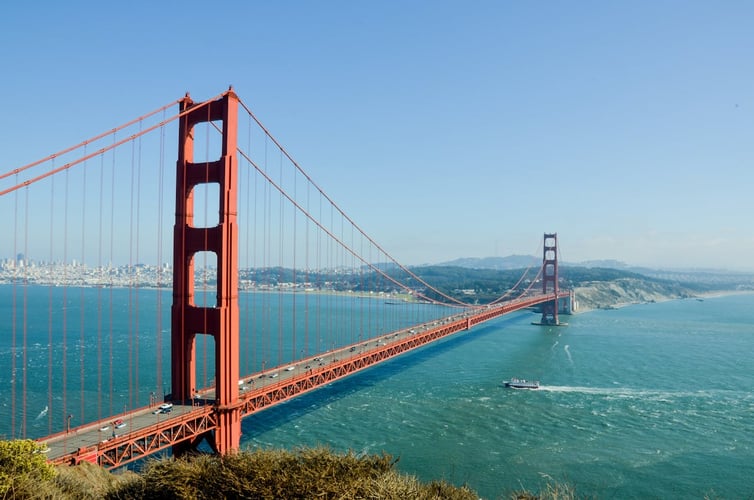Ultimate Solo Travel Safety Guide: Tips for Independent Explorers
Embark on your solo travel journey with confidence by incorporating these essential tips and strategies to ensure your safety every step of the way. From understanding the risks of traveling alone to navigating unfamiliar environments and being prepared for emergencies, this comprehensive guide will equip you with the knowledge and tools needed to have a safe and fulfilling solo travel experience. So, pack your bags, set out on your adventure, and embrace the freedom and independence that solo travel has to offer while prioritizing your safety above all else.
Understanding the Risks of Solo Travel
Solo travel can be an incredibly rewarding experience, allowing you the freedom to explore at your own pace and on your own terms. However, it's important to understand the potential risks involved. As a solo traveler, you may be more vulnerable to theft, scams, and other safety concerns. It's crucial to be aware of these risks and take necessary precautions to ensure your safety.
One important risk to consider is the increased likelihood of being targeted by pickpockets or thieves. When you're alone, you may be seen as an easier target. It's important to stay vigilant and keep your belongings secure at all times. Consider using a money belt or hidden pouch to keep your valuables safe.
Another risk to be aware of is the potential for scams or fraud. In some tourist destinations, there may be individuals who try to take advantage of solo travelers. Be cautious of unsolicited offers or strangers who seem overly friendly. Research common scams in the area you're visiting and familiarize yourself with the warning signs to avoid falling victim.
Lastly, it's important to consider the potential for accidents or emergencies while traveling alone. Without a travel companion, you may be solely responsible for your own safety. Make sure to have a plan in place for emergencies, such as knowing the location of the nearest hospital or embassy. It's also a good idea to share your itinerary with a trusted friend or family member, so they know where you'll be in case of an emergency.
Pre-Trip Preparation: Safety Planning and Research
Before embarking on your solo adventure, it's essential to engage in thorough safety planning and research. By taking the time to prepare in advance, you can minimize potential risks and ensure a safer trip.
Start by researching your destination thoroughly. Familiarize yourself with the local customs, laws, and cultural norms to avoid unintentionally offending anyone or getting into trouble. It's also a good idea to learn a few basic phrases in the local language to help you navigate and communicate more effectively.
When it comes to accommodation, prioritize safety. Choose reputable hotels or hostels with good reviews and security measures in place. Consider staying in well-populated areas rather than remote locations, especially if you're traveling alone for the first time.
In addition to researching your destination, it's important to make copies of important documents, such as your passport, identification, and travel insurance. Keep these copies in a separate location from the originals, and consider scanning them and storing them electronically as well. This way, if your documents are lost or stolen, you have backups.
Lastly, it's crucial to have a plan for communication while traveling solo. Make sure you have a reliable means of staying in touch with family or friends back home, whether it's through a local SIM card, international data plan, or public Wi-Fi. Share your contact information with a trusted person and establish regular check-ins to ensure your well-being.
Safety Measures During Your Trip
Once you've arrived at your destination, there are several safety measures you should take to protect yourself while traveling solo.
First and foremost, trust your instincts. If something feels off or unsafe, remove yourself from the situation. It's better to be cautious and avoid potential dangers than to take unnecessary risks.
Maintain situational awareness at all times. Be mindful of your surroundings and pay attention to the people around you. Avoid walking alone at night in unfamiliar or poorly lit areas, and try to stick to well-populated streets.
When it comes to transportation, prioritize safety. Opt for licensed taxis or rideshare services rather than accepting rides from strangers. If you're using public transportation, be aware of your belongings and keep them secure. Avoid displaying valuable items or large amounts of cash.
Another important safety measure is to blend in with the locals as much as possible. Avoid wearing flashy jewelry or clothing that may attract unwanted attention. Research the local dress code and try to dress appropriately to respect the local culture.
Lastly, be cautious when sharing personal information with strangers. While it's great to meet new people and make connections while traveling, exercise caution when giving out personal details. Use discretion and trust your instincts when it comes to sharing information about yourself.
Navigating Unfamiliar Environments
Navigating unfamiliar environments can be challenging, especially when traveling solo. However, with some careful planning and preparation, you can feel more confident and secure.
Start by familiarizing yourself with maps and directions of the area you'll be exploring. Identify key landmarks or points of interest that can help you navigate and find your way back to your accommodation.
Consider using technology to your advantage. Utilize navigation apps or offline maps on your smartphone to navigate unfamiliar streets. Make sure your phone is fully charged before heading out and carry a portable charger or power bank in case you need to recharge on the go.
If you're exploring a new city, research public transportation options in advance. Familiarize yourself with bus or subway routes, schedules, and ticketing systems. This can help you navigate the city more efficiently and avoid getting lost.
When venturing into remote or less populated areas, let someone know your plans. Share your itinerary with a trusted friend or family member and establish regular check-ins. This way, if something goes wrong or you don't return as planned, someone will know to raise the alarm.
Lastly, trust local authorities and seek their assistance if needed. If you find yourself in a potentially dangerous situation or need help, don't hesitate to contact the local police or emergency services. They are there to ensure your safety and well-being.
Emergency Response and Communication
While we hope you never have to use them, it's important to be prepared for emergencies and know how to communicate effectively in such situations.
First and foremost, familiarize yourself with the emergency contact numbers of the country you're visiting. In the United States, the emergency number is 911, but this may vary in other countries. Make sure you know how to dial for help and understand the local emergency response system.
Consider carrying a personal safety alarm or whistle. These small devices can attract attention and deter potential attackers in case of an emergency. Keep it easily accessible, such as on a keychain or in your pocket.
In case of a medical emergency, make sure you have adequate travel insurance that covers medical expenses and emergency evacuation. Keep a copy of your insurance policy and contact information in a secure location, and carry a card or document with this information on your person at all times.
If you find yourself in an emergency situation, try to remain calm and assess your surroundings. Look for a safe place to seek shelter or assistance. If possible, contact local authorities or emergency services for help.
Lastly, maintain regular communication with trusted individuals back home. Establish a check-in system and let someone know your expected itinerary and any changes to your plans. If you miss a check-in or something seems wrong, they can initiate appropriate actions to ensure your safety.
.png?width=600&height=280&name=Navdurga%20Tourism%20Logo%20(1).png)



